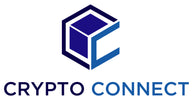What Are DAOs?
Vitalik Buterin first coined the term in 2013, laying the foundation for the concept. The first DAO was founded three years later, aptly named The DAO.
A DAO is commonly defined by these five characteristics:
- Flat organisation — A DAO, in principle, has no hierarchy, and decisions are made by its stakeholders or members instead of leaders or managers; although usually, in practice, certain spheres of decision-making may be delegated to a core or selected team.
- Transparency — A DAO must be open-source. Anyone can inspect the code on the smart contract or view the DAO’s transaction history on the blockchain.
- Open access — Anyone can, in theory, be a member of the DAO, as long as they fulfil the predetermined requirements, such as holding its governance token.
- Democracy — Depending on the voting mechanism, it may be the case that no single party can veto a request once it passes the voting process.
- Minimal human resources — DAOs operate mostly algorithmically, governed by code. Occasionally, members of the DAO may hire a person to fix issues on the smart contract, such as bugs or updates.

